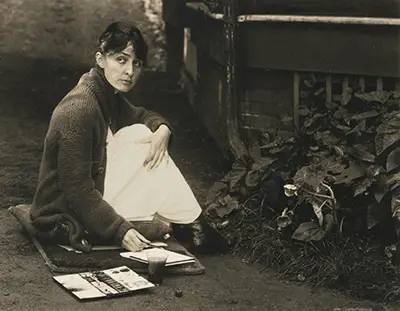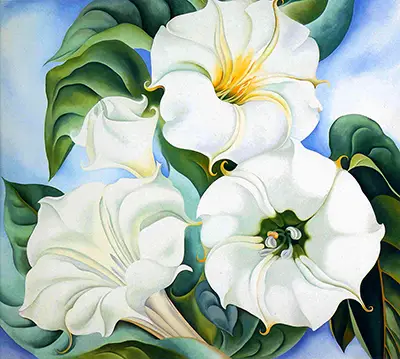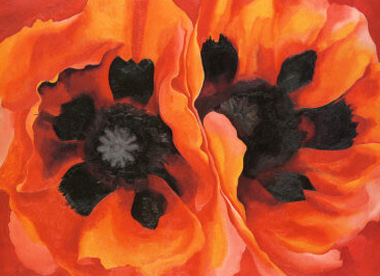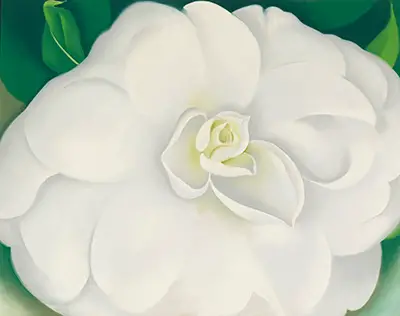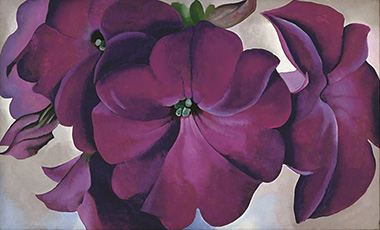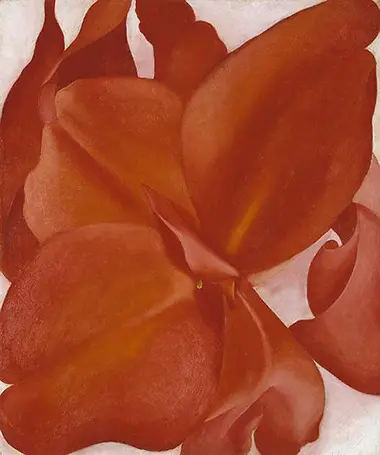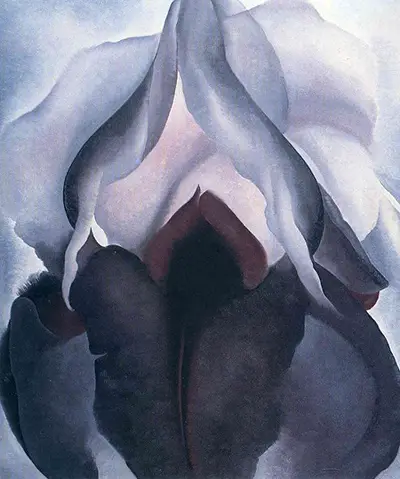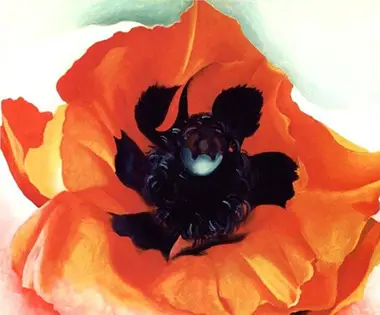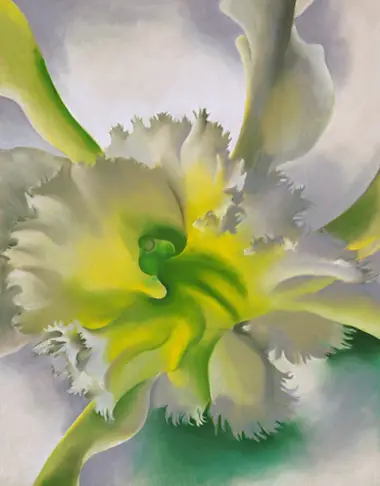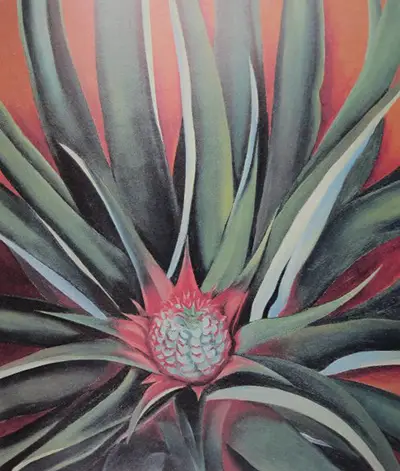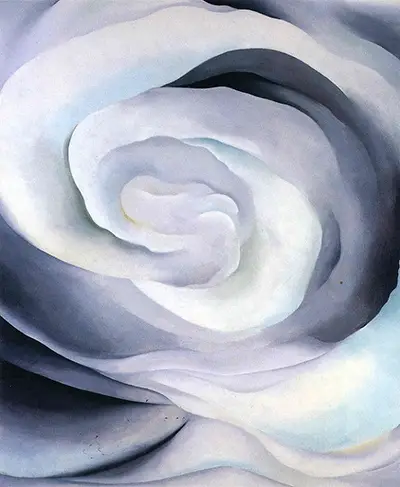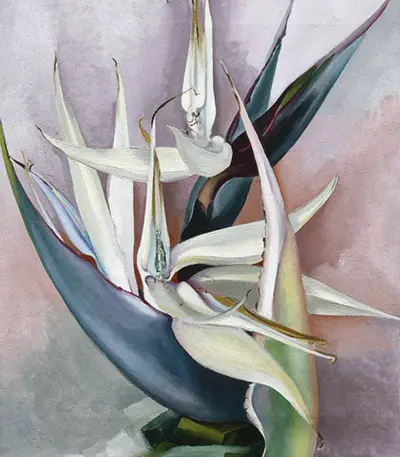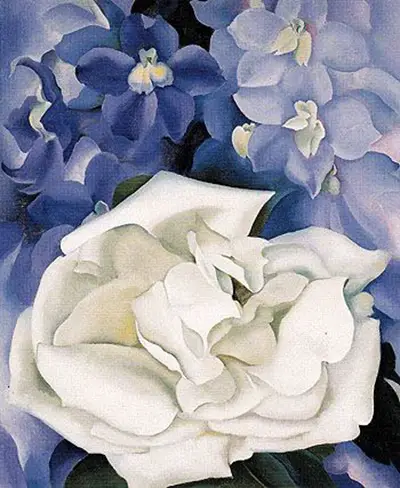It is these that have established her as one of the major figures of American art, and also highly influential female artist. Flower paintings had always previously seen as traditional, still life art in which artists would show off their technical skills, but not so much their creative flair. She changed all that, to the point where she essentially owned the painting of flowers as an art form.
The rounded shapes and crisp edges of this theme were ideal to the technical style that the artist had already developed earlier on in her career. Georgia was also a keen gardener and had connections to several local florists when living in New York City. This easy access allowed her to paint carnations, roses, larkspurs, hollyhocks and trumpet flowers.
It were Red Cannas that an adult O'Keeffe first captured with oils and watercolours, and her enjoyment here quickly led her to add other flower types to her portfolio. Having earlier portrayed flowers as a child, this was actually just a return to an original passion which continued throughout her life. Initially, her compositions were fairly traditional, captured all of the plant including flower and stem. Later on, she decided to encourage others to see the beauty that she had found by focusing on the blossoming elements in greater detail. This brightness and energy helped to differentiate her work from what had gone before by classic still life artists.
O'Keeffe recognised during her time living in New York that so few people now took, or had the time to take, interest in such stunning items and she wanted to re-connect the masses with the importance and beauty of nature, much as Ansel Adams had done through photography. This artist did not seek to reproduce accurately the blossoming flower, merely assert her own expressive creativity upon it's original beauty. This approach was earlier achieved by Vincent van Gogh in paintings such as Sunflowers, 1887. Modernists like Henri Matisse and Emil Nolde would also capture flowers during their careers, but not with the zoomed-in characteristic used by O'Keeffe.
